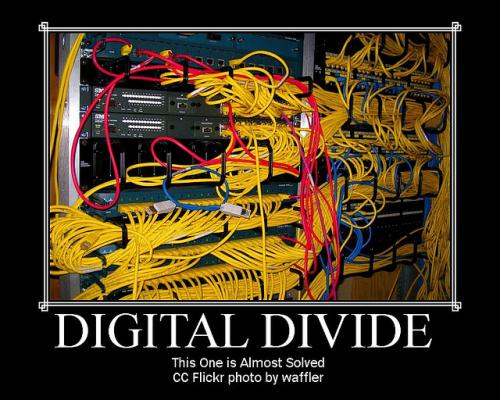
Image Credit:
In my E314 course, I need to teach a wide array of skills, ranging from academic research to close reading, from composition to the Oxford English Dictionary. Balancing these priorities against each other, and all of the skills against the need to provide students with a basic background for some demanding books, makes for an interesting challenge. Yet after a few semesters of teaching similar courses, which provided me with plenty of opportunities for fine-tuning my organization, I was surprised to hear one student make a rather basic observation to another:
“You’ve got to click, like, a lot if you want to see the comments on your paper.”
It was a bit of a revelatory moment for me. As someone who’s been using various forms of commenting software for the last decade or so, I never thought that the Canvas course management system posed any difficulties for students. I’d even prized myself on making a rather extensive and well-organized private course site, with various assignments, explanations of grading rubrics, links to important resources, and helpful hints tied together and always just a click or two away. But when I looked at what students actually had to do to see my comments, forcing myself to forget the basic assumptions I’ve internalized over the years, I realized—yeah. Maybe Canvas could be more easy to operate.
Or, more to the point, maybe I should be more proactive in providing my students with the tutorials and information they need to succeed in my class, rather than making it an impromptu computer-science flunk out class.
Below, I’m posting a series of images (along with comments, in a purposefully informal style that matches my classroom ethos) that walk through the process of accessing marginal comments in Canvas from a student’s perspective. I’d love these images to be shared; the more students are familiar with how to view their annotations, the better, and I’d like to think my effort provides benefit for more than just my students. In short, please adopt and adapt this tutorial at will.
But I also hope that the tutorial replicated below can give us a chance to think about the role of technology—and digital literacy—within classes that don’t have any particular digital focus. It’s tempting to blame students for failing to meet our arbitrary standards for technical proficiency. Yet leaving students without crucial instructions (even for tasks I find to be second-nature, and that seem to draw on a rather basic level of digital know-how) seems a betrayal of my role as an educator. Indeed, considering our growing awareness of the ways that the “digital divide” involves not just sheer access to web-based resources, but also an array of soft skills that may be disproportionally distributed among our students, it is crucial that we maintain awareness of our technology’s ability to throw unnecessary hurdles in the way of otherwise promising students. If we don’t consider the usability of our classroom technologies, we really are just policing the already problematic digital divide.
Looking at the Comments on Your Paper
I am a fan of Canvas. Unfortunately, sometimes their userface can be a bit ... disorientating. Here, therefore, is your Official Guide to Seeing the Comments I Gave To Your Paper(TM)!
Step 1: when your paper is graded, the course homepage should look something like this. Click on the link in the green circle (I expect you already knew this.)
Step 2: Click on the "View Feedback" tab circled in GREEN. Not the friendly-looking link to your paper that seems so inviting and linkish. (Yeah, Canvas's UI could probably be better here.) Note that it is circled in red. Do not click it. It will not help you.
You will also see overall comments on the right of your screen.
Step 3: Here things get a bit tricky. Some parts of your paper will be highlighted. There will be dotted lines going off into the right margin (circled in yellow). You also might see some comments at the end of your paper, and you will still see the general feedback on the right (both circled in blue). However, here you need to click on the minus sign (circled in green) a couple of times to get my many specific comments on your paper!
Step 4: Now you can see all of my comments (especially the ones circled in blue)! Congratulations! This will really help you in revisions.

